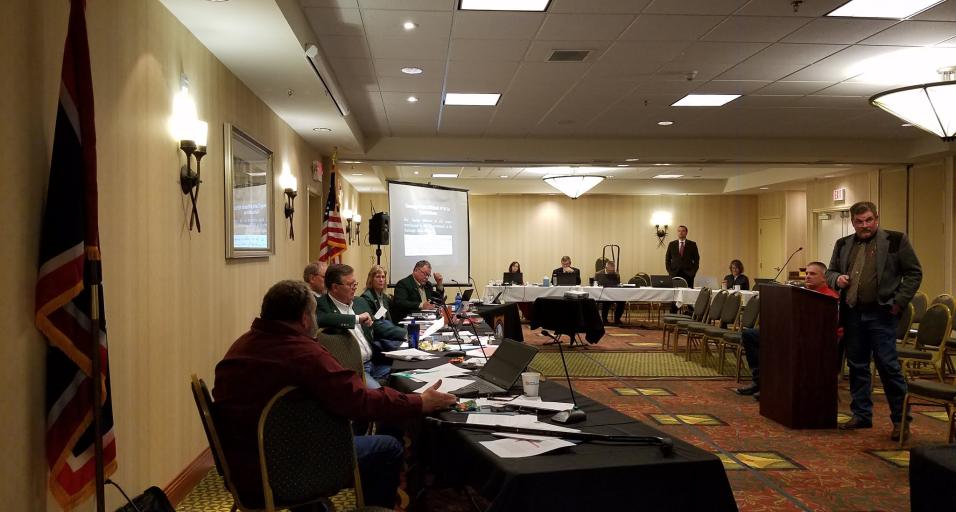The Wyoming Game and Fish Commission held its November meeting this week in Casper. The volunteer board voted on several major topics and had other substantial discussions related to Wyoming’s fish and wildlife. The commission voted to approve 12-month licenses for fishing, small game, game birds, furbearers and conservation stamps. This came after a change in state law in 2018 allowing licenses not to expire at the end of the calendar year, but to expire 12 months from the date of purchase with the goal to be more customer friendly. The commission also approved a fee to help Game and Fish offset costs of license purchases made with a credit card.
After a survey of Wyoming hunters the commission directed Game and Fish to draft a hunting regulation related to fair chase and new technologies. This would:
- Allow traceable arrows to better track wounded prey.
- Prohibit smart rifles, which are rifles that lock onto a target.
- Prohibit enhanced sights for archery.
- Mandate that hunters follow up on a shot to determine if an animal is wounded or killed.
This draft regulation would still have to go out for public comment in the coming months and the commission would have a final vote on the potential changes in April 2019.
There was another significant discussion about migration corridor policy. Ultimately, the commission approved an additional $25,000 to evaluate existing GPS data. The research will shape guidelines to help determine the amount of surface disturbance inside a mule deer migration corridor that impacts mule deer use. The results will be used to guide further Game and Fish recommendations to land management agencies.
At this meeting the commission also approved Mule Deer Initiative projects for 2019. These involve six of Wyoming’s mule deer herds and would enhance more than 100,000 acres of key habitat and further research about mule deer movements. This is the 4th year of the commission’s Mule Deer Initiative, which is a significant investment in helping stem a west-wide population decline of the iconic species.
Wyoming now also has its first ever Black-Footed Ferret Management Plan. Black-footed ferrets were once thought to be extinct, before a small remnant population was found in Wyoming in 1981. They remain one of the most endangered mammals in the country. The plan was created by a steering committee made up of many different stakeholders. It sets a statewide population objective of 341 breeding adults (currently there are an estimated 60), identifies management areas and provides a template to identify potential new introduction sites (the sites in Wyoming now are in the Shirley Basin and outside of Meeteetse). The strategies are closely tied to management of prairie dogs because that is almost exclusively the prey base of black-footed ferrets.



